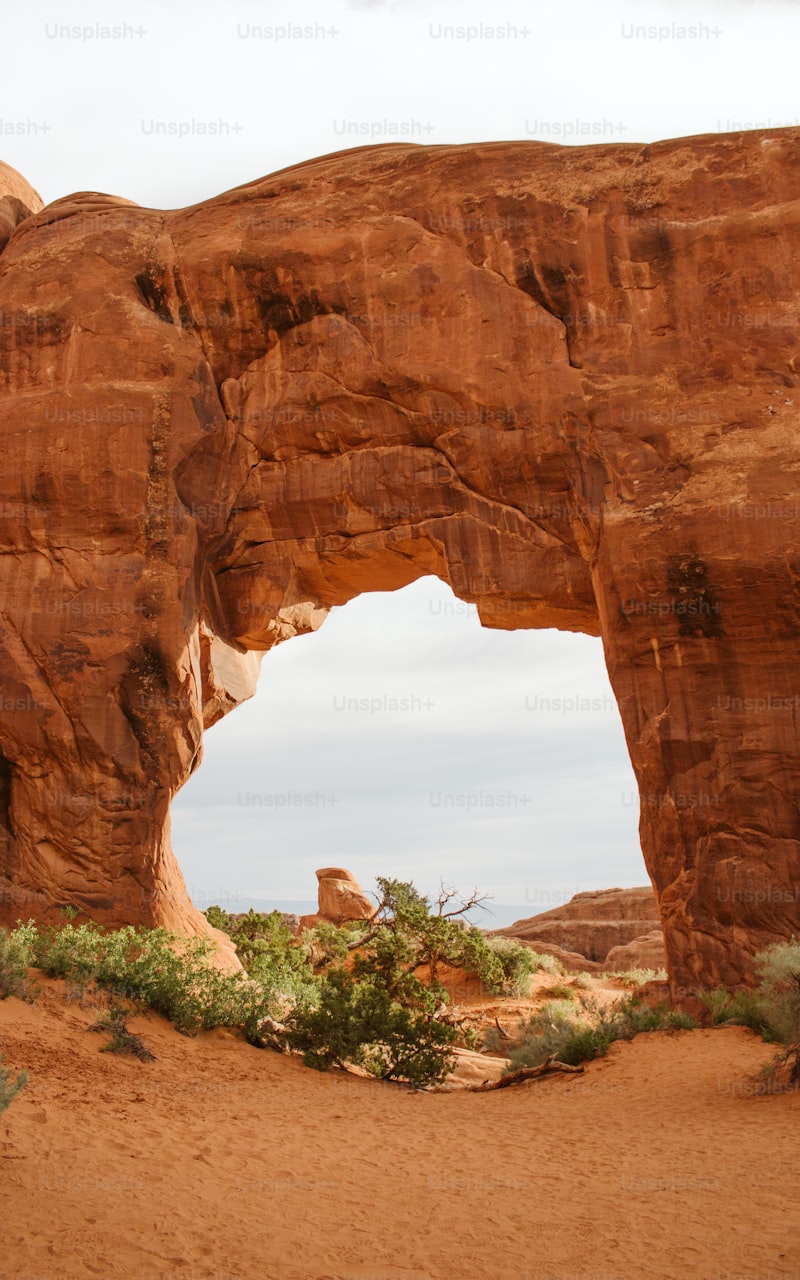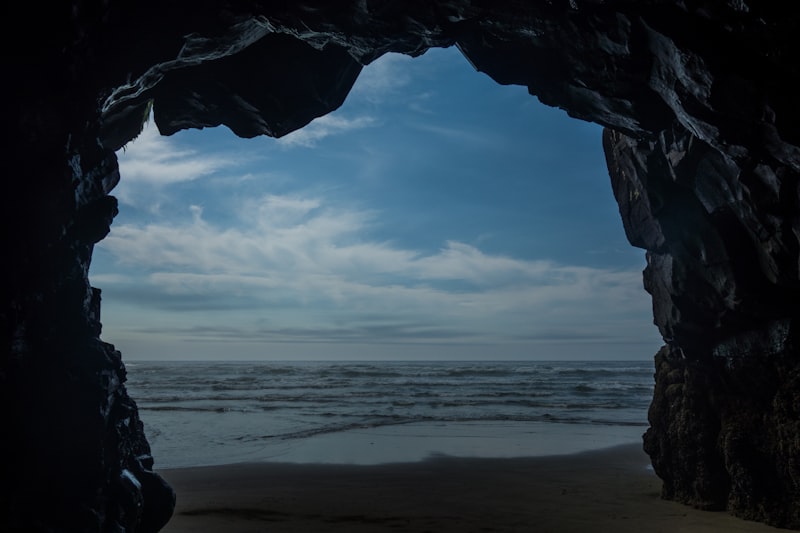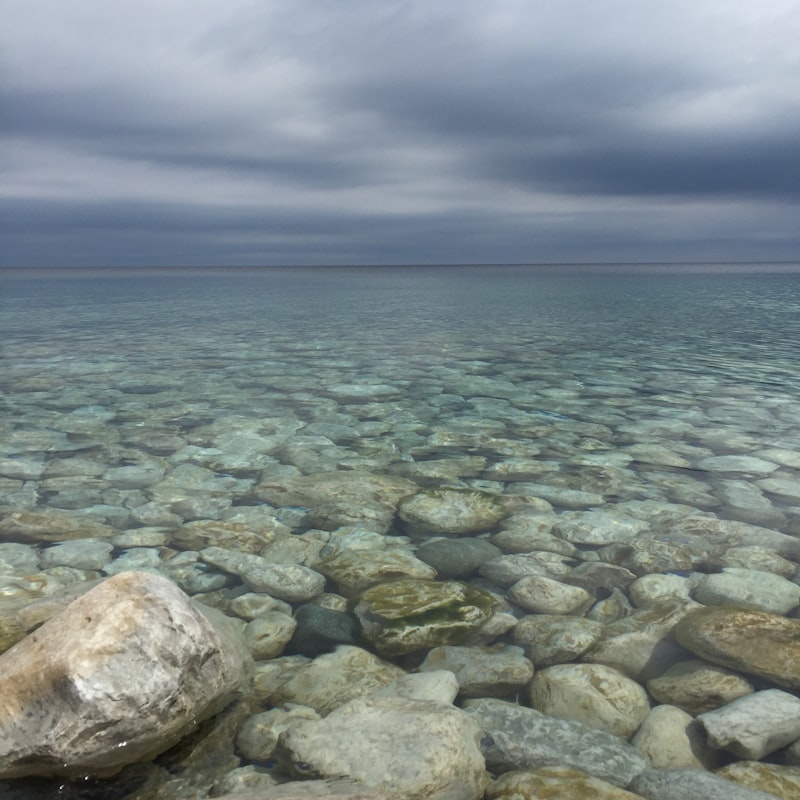Imagine wandering through a landscape where nature’s artistry takes center stage: natural archways and bridges. These geological formations, sculpted over centuries by the elements, are more than just stunning sights – they’re windows into Earth’s history and processes.
Natural archways are like nature’s own sculptures, carved from rock formations through the patient work of wind and water. These arches often form in areas where softer rock erodes away faster than the harder rock above it, creating dramatic bridges that span canyons or connect cliff faces. It’s a reminder of the constant dance between erosion and creation that shapes our planet.
Utah’s iconic Arches National Park boasts over 2,000 natural stone arches, each with its own unique shape and story. From the delicate span of Landscape Arch to the iconic Delicate Arch framing the desert landscape, each arch offers a glimpse into the power of natural forces.
These arches aren’t just geological wonders; they’re also havens for biodiversity. In places like Natural Bridge State Park in Virginia, these formations provide homes for unique ecosystems that thrive in the cool, shaded spaces beneath the arches.
What makes these natural archways and bridges even more incredible is their role as time capsules. By studying their layers and formations, geologists can uncover clues about ancient climates and environments, piecing together the puzzle of Earth’s history.
So next time you find yourself near a natural arch or bridge, take a moment to marvel at the forces that shaped it. These natural wonders aren’t just random formations – they’re reminders of our planet’s ever-changing landscape and the power of natural processes.
Nature’s Marvels: The World’s Most Spectacular Natural Archways
Have you ever marveled at nature’s breathtaking creations? Natural archways, sculpted over millennia by the forces of wind and water, stand as testament to the Earth’s artistic prowess. These stunning formations captivate travelers and geologists alike, offering glimpses into the planet’s geological history.
One of the most renowned natural arches resides in Arches National Park, Utah. Delicate Arch, standing proudly against the desert backdrop, symbolizes resilience and beauty in its natural form. Its graceful curve has become an iconic symbol of the American Southwest.
Across the globe, in Australia’s Northern Territory, lies the striking formation known as Uluru. Though primarily recognized as a monolith, Uluru also features natural archways eroded into its massive sandstone structure. These arches, formed through centuries of erosion, create a surreal landscape against the vast Australian outback.
Moving to the Middle East, Jordan’s Wadi Rum Desert boasts the impressive Burdah Rock Bridge. This natural arch spans a canyon, offering adventurers a precarious but awe-inspiring path across the desert expanse. The contrast of red sandstone against the clear blue sky creates a scene straight out of a painter’s dream.
In the heart of the Pacific Ocean, the natural archways of the Galápagos Islands provide refuge for unique ecosystems. These volcanic islands, shaped by both geological upheaval and relentless ocean waves, showcase arches that frame stunning ocean vistas and serve as habitats for diverse marine life.
Back in Europe, the Azure Window in Malta, though tragically collapsed, remains a testament to the fleeting nature of these geological wonders. Its loss reminds us of the delicate balance between natural preservation and the inevitable passage of time.
Bridging Earth’s Wonders: Unveiling Nature’s Hidden Arches
Have you ever marveled at the intricate beauty of natural arches that span across landscapes, silently bridging vast expanses of terrain? Nature’s hidden arches, sculpted over millennia by the forces of wind and water, stand as awe-inspiring testaments to the Earth’s geological artistry.
Imagine standing beneath the towering span of Utah’s delicate Arch, its graceful curve etched against the desert sky like a giant’s bridge frozen in time. Each arch tells a story of geological patience, where the relentless dance of erosion gradually carves away rock layers, leaving behind these breathtaking formations.

These natural arches aren’t just random rock formations; they are nature’s masterpieces, meticulously crafted through a slow and steady process. Arches National Park in Utah, for example, boasts over 2,000 of these stunning formations, each with its own unique shape and character.
From the delicate balance of Landscape Arch to the dramatic span of Corona Arch, each arch offers a glimpse into Earth’s past while standing as a beacon of natural wonder in the present. These formations aren’t just static sculptures; they evolve over time, shaped by the same forces that created them.
Visiting these arches is like stepping into a natural cathedral, where the grandeur of Earth’s architecture leaves visitors humbled and inspired. As you hike through the rugged terrain surrounding these arches, you can’t help but marvel at the intricate details of their construction, each curve and angle a testament to nature’s patient craftsmanship.
Exploring nature’s hidden arches is more than a journey through geological wonders; it’s a journey through time itself, where the Earth’s artistic prowess is on full display. So, next time you find yourself in the presence of one of these natural wonders, take a moment to appreciate the beauty and majesty that only nature can create.
This article aims to capture the reader’s imagination by describing the beauty and significance of natural arches while maintaining an engaging and informative tone.
Journey Through Time: Exploring Ancient Natural Bridges Across Continents
One of the most awe-inspiring examples is the Rainbow Bridge in Utah, USA. Carved by the relentless flow of the Glen Canyon, this majestic sandstone arch stretches over 80 meters, a colossal testament to the patience of water and wind. As you stand beneath its arch, you can almost hear the whispers of centuries gone by, a silent witness to the passage of time.
Venturing eastward, the Eshima Ohashi Bridge in Japan presents a modern marvel that echoes ancient natural bridges in spirit. Rising sharply like a roller coaster track over Lake Nakaumi, it merges sky and water in a breathtaking spectacle. Its steep incline evokes the challenge of conquering nature, reminiscent of ancient civilizations overcoming natural obstacles with ingenuity.
Crossing continents to Europe, the Pont d’Arc in France stands as a natural wonder steeped in prehistoric significance. Spanning the Ardèche River, this limestone arch is a gateway to the Paleolithic era, where early humans roamed amidst cave paintings and ancient mysteries. It reminds us that these natural bridges are not just geological formations but cultural relics, linking our present to our distant past.
In China, the Moon Hill arch in Yangshuo County rises like a crescent moon amidst karst landscapes. Its name derived from the lunar shape it mirrors against the sky, evokes a poetic journey through time. As sunlight dances through its opening, casting shadows that shift like whispers of ages past, one can’t help but marvel at nature’s poetic craftsmanship.
These ancient natural bridges, scattered across continents, invite us on a journey through time and space. They are more than mere geological formations; they are storytellers of our planet’s history, connecting civilizations and epochs in a mesmerizing tapestry of nature’s artistry.
Architects of Erosion: How Nature Shapes Stunning Rock Arches
Imagine standing beneath a towering rock arch, its graceful curve stretching across the sky like a bridge crafted by nature’s hand. Each arch tells a story of patience and persistence, as wind and water gradually wear away the rock, leaving behind these majestic formations. It’s a testament to the power of time and the subtle yet persistent forces of erosion.
One of the most famous examples is the delicate yet robust Delicate Arch in Utah’s Arches National Park. Perched on the edge of a sandstone plateau, this arch has become an icon of the American Southwest, drawing visitors from around the globe to witness its striking beauty. The arch stands as a symbol of endurance, shaped by wind and weather into its current form.
Nature’s architects of erosion do not discriminate based on size or location. From the towering spans of Utah to the hidden gems tucked away in remote corners of the world, rock arches come in all shapes and sizes, each with its own unique charm. Some are grand and imposing, like the Azure Window in Malta before its collapse, while others are small and intimate, tucked away in secret canyons waiting to be discovered.
What makes these formations truly remarkable is their ephemeral nature. While they appear timeless to us, in geological terms, they are fleeting. The same processes that created them continue to shape and reshape the landscape, ensuring that each visit to a rock arch is a unique experience, a snapshot of a moment in the ongoing story of Earth’s transformation.
Standing before these natural sculptures, one can’t help but marvel at the resilience of rock and the patience of erosion. It’s a reminder that beauty often emerges from adversity, and that nature, with its quiet determination, continues to shape the world around us in ways both profound and breathtaking.
Hidden Gems: Discovering Secret Natural Bridges Around the Globe
Have you ever stumbled upon a natural wonder that took your breath away? Imagine walking through lush forests or across rugged terrains only to find nature’s own architectural marvels: natural bridges. These hidden gems are not just geological formations; they are portals to a world where time and nature converge in stunning harmony.
One such hidden treasure is the “Fairy Bridge” nestled deep in the forests of Zhangjiajie, China. Aptly named for its ethereal beauty, this natural bridge spans a verdant valley like a delicate ribbon woven by the hands of giants. As sunlight filters through the dense foliage, the bridge casts a mesmerizing shadow that dances across the forest floor.
In the heart of the American Southwest lies another natural wonder, the Rainbow Bridge. Tucked away in the rugged landscape of Utah, this majestic sandstone bridge arches gracefully over the winding waters of Lake Powell. Standing at over 275 feet tall, it is a testament to the power of erosion and the beauty of geological time.
Venture further south to Australia, where the enchanting Natural Bridge in Springbrook National Park awaits. Carved over millennia by the force of a cascading waterfall, this bridge is a sanctuary for glowworms that illuminate its ceiling like a starlit sky. Here, visitors can witness nature’s spectacle unfold as day transitions into night.
In Europe, the Pont d’Arc in France beckons adventurers and history enthusiasts alike. This natural limestone arch spans the Ardèche River, offering a glimpse into the region’s ancient past. Imagine paddling beneath its towering arches, surrounded by cliffs that echo with the whispers of prehistoric civilizations.
These secret natural bridges are not just geological formations; they are storytellers of our planet’s rich history. Each one is a testament to the awe-inspiring power of nature and the mysteries waiting to be discovered. So, next time you embark on a journey off the beaten path, keep your eyes open. You might just stumble upon one of these hidden gems, where nature’s beauty knows no bounds.
From Utah to China: Epic Adventures to Iconic Natural Archways

Imagine standing amidst towering natural arches, carved over millennia by wind and water, spanning from the red rocks of Utah to the remote landscapes of China. These iconic natural formations, sculpted by nature’s patient hand, offer adventurers a glimpse into the Earth’s geological wonders.
Utah’s Arches National Park boasts some of the most famous natural arches globally, including the delicate Arch and Landscape Arch. Each arch tells a story of erosion and time, inviting hikers and photographers alike to marvel at their beauty. As the sun sets, casting a golden hue over the sandstone, visitors witness a spectacle that has inspired countless artists and explorers.
In China, the Zhangjiajie National Forest Park presents a different kind of natural marvel—the towering sandstone pillars and arches known as the “Avatar Hallelujah Mountain.” These dramatic formations served as inspiration for the floating mountains in James Cameron’s film “Avatar,” captivating imaginations with their otherworldly appearance.

Travelers embarking on these epic adventures find themselves immersed in nature’s grandeur, surrounded by cliffs that seem to defy gravity and arches that frame the sky. Each step unveils a new perspective, reminding us of the Earth’s ancient history and the power of natural forces.
Whether exploring the vast canyons of Utah or navigating the mist-covered valleys of Zhangjiajie, adventurers encounter landscapes that stir the soul and ignite the imagination. These journeys to iconic natural archways transcend mere sightseeing—they are transformative experiences that leave an indelible mark on those fortunate enough to witness them.
This article aims to capture the awe-inspiring nature of these natural wonders while optimizing for SEO with relevant keywords and maintaining a conversational tone to engage the reader effectively.
Frequently Asked Questions
What are natural archways and bridges?
Natural archways and bridges are geological formations created over time by erosion, often by water, wind, or ice. They are characterized by their curved or arched openings, formed in rock or land formations. These structures are natural wonders, showcasing the power of natural forces over millennia.
Where can I find famous natural archways and bridges?
Discover where to find renowned natural archways and bridges around the world. Explore iconic sites like Arches National Park in Utah, USA, the Azure Window in Malta, or the Twelve Apostles in Australia. Experience these natural wonders that showcase the beauty of geological formations.
Are natural archways and bridges safe to visit?
Discover if natural archways and bridges are safe to visit with our FAQ. We provide clear, concise information on the safety considerations involved in visiting these natural formations.
What should I consider when exploring natural archways and bridges?
Explore natural archways and bridges by considering their stability, surroundings, and accessibility. Look for signs of erosion or instability before venturing close. Always prioritize safety and respect the natural environment by staying on designated paths.
How are natural archways and bridges formed?
Discover how natural archways and bridges are formed through the gradual process of erosion. Over thousands or millions of years, water, wind, and other natural forces sculpt rock formations, wearing away softer layers while leaving behind sturdy structures like arches and bridges. Learn about the fascinating geological processes behind these natural wonders.



